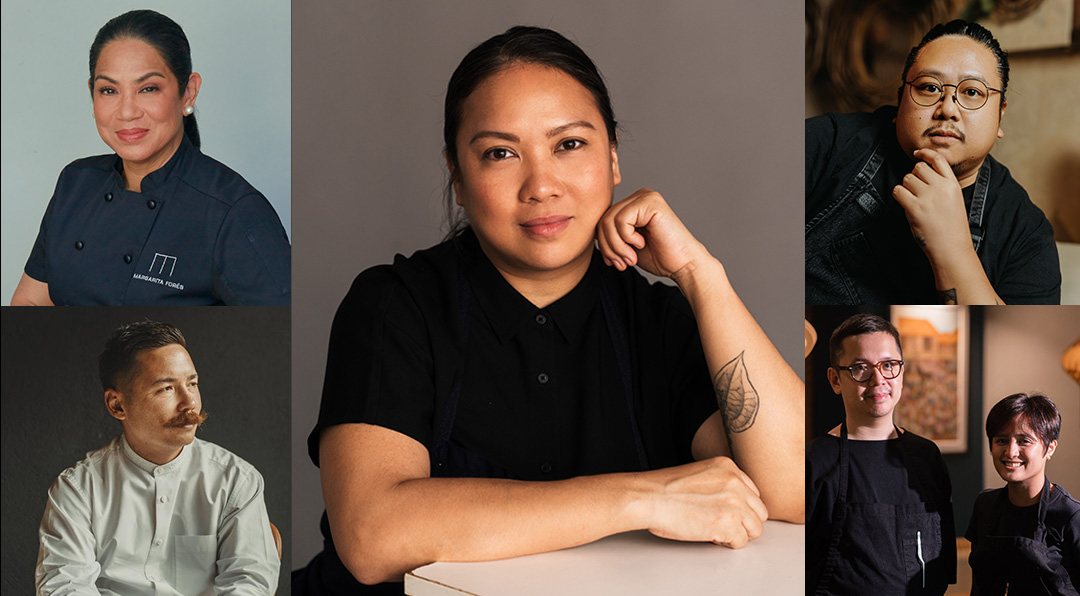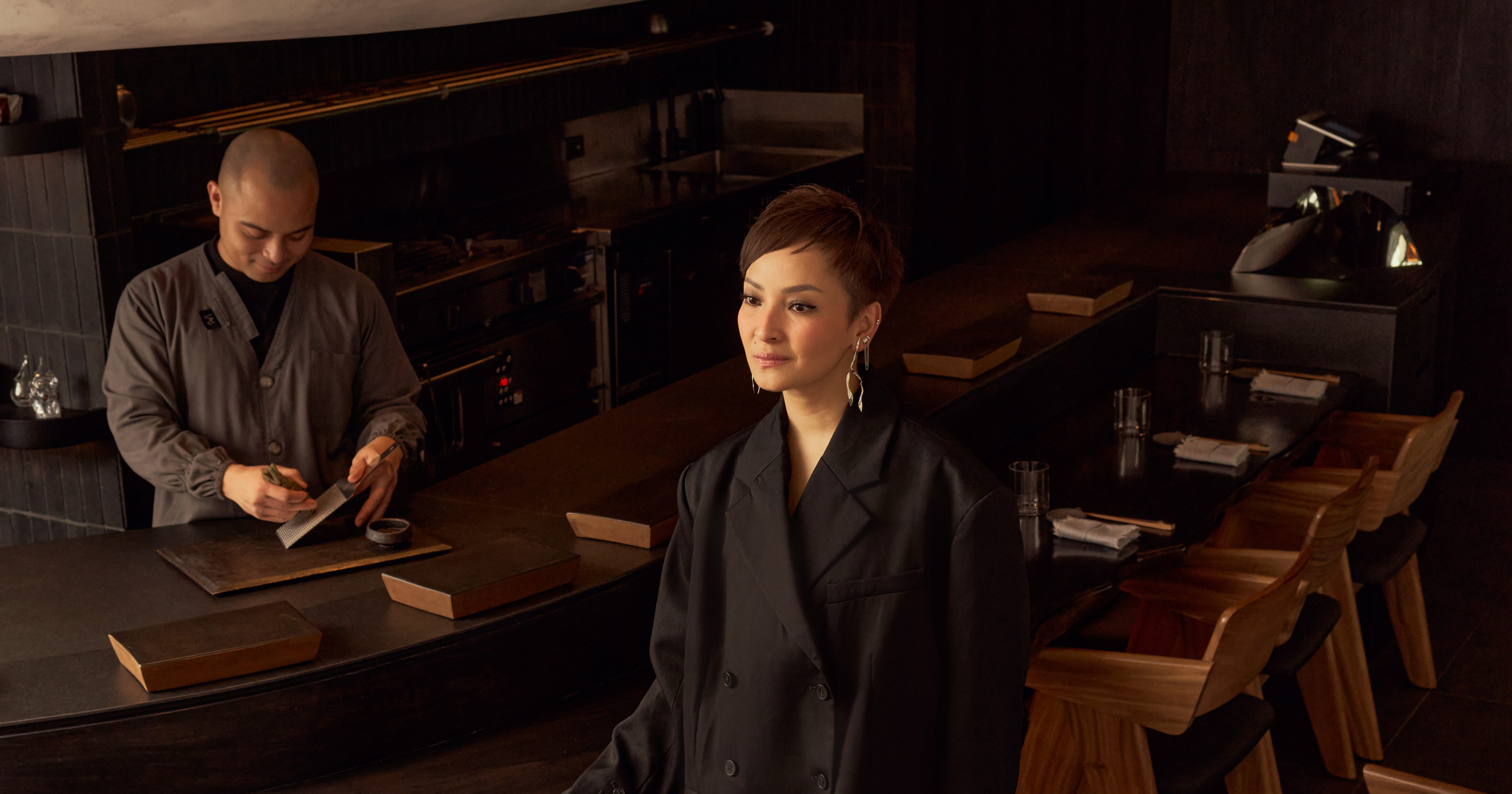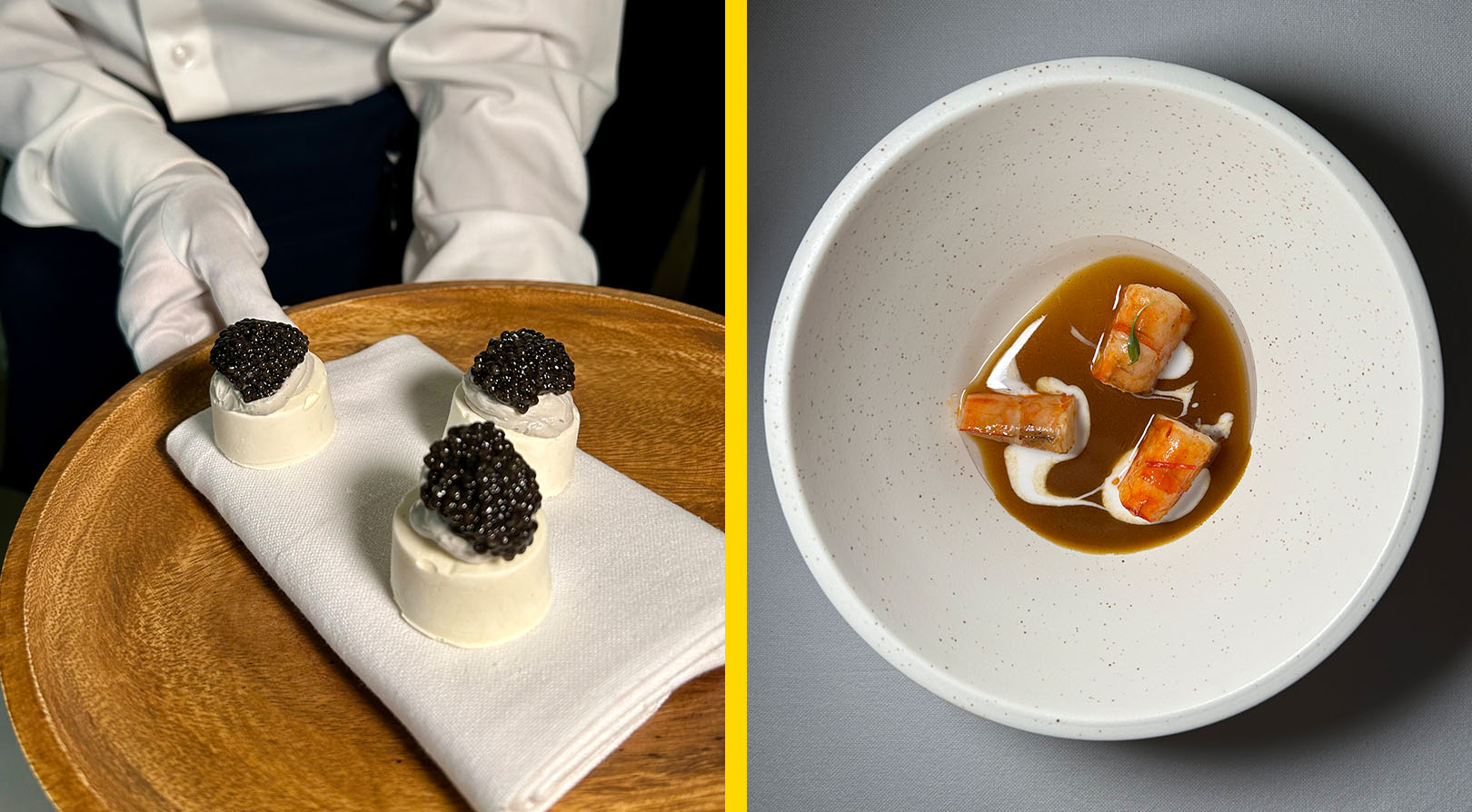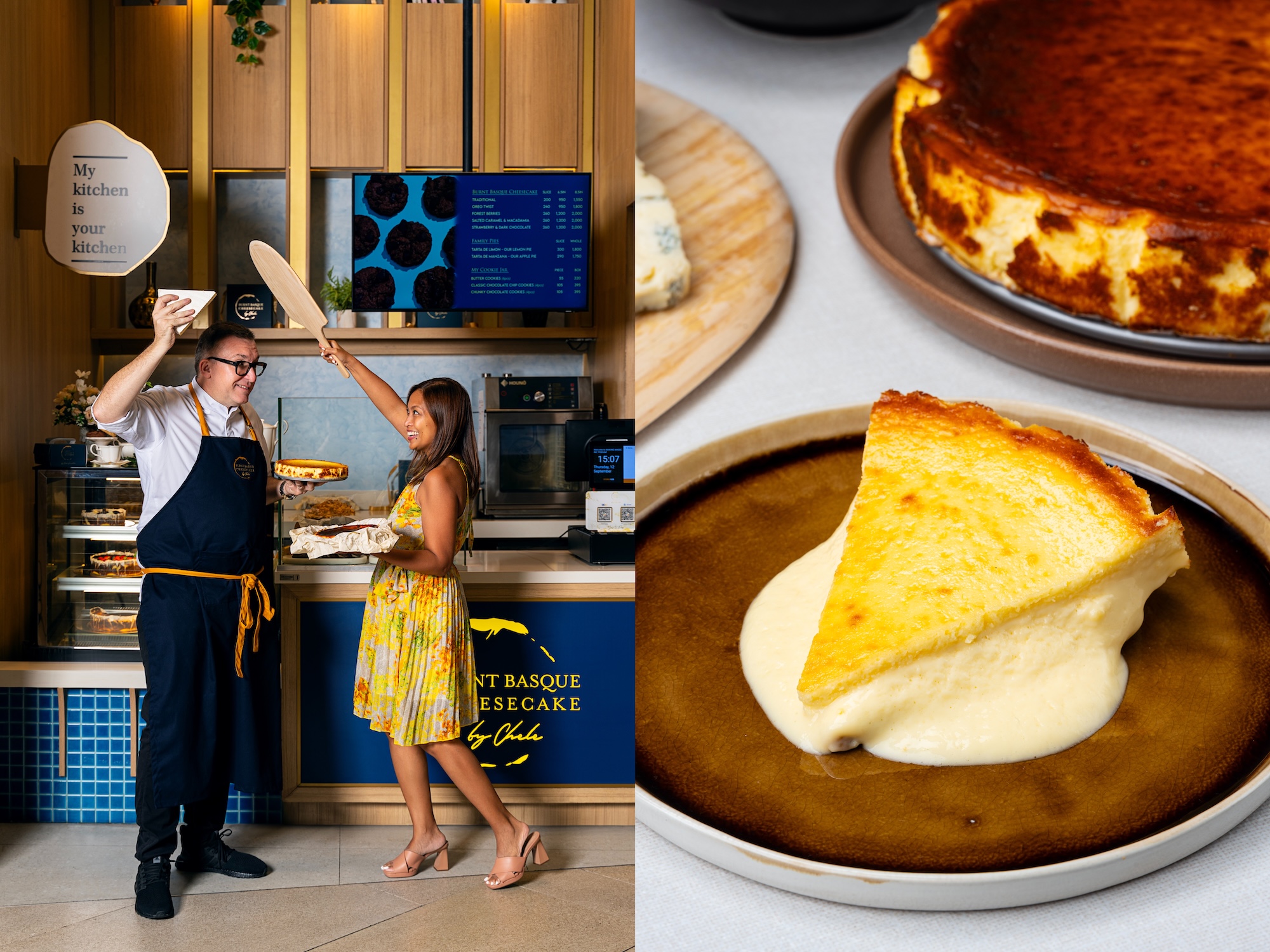Ivan Yeo has a way with smoking meats, but he also has a way with words.
“It felt like I’ve been here for a while… 15 years,” the Blue Smoke co-founder and head chef says with a chuckle, detailing his experience flying in from Singapore the day before the Singapore Food Festival pop-up event at The Grid. “Must be the drinks yesterday.”
His knack for balancing the romance and chaos behind the art of smoking was on full display in the short time I spent chatting with him during his three-day participation at the month-long event.
But that was more than enough time to realize that Yeo also has a burning desire for cooking with and understanding the creative sparks you get from playing with fire from place to place.
“Maybe I’m romanticizing it a little bit but it has different characters,” he says. “Fires in the Philippines burn very differently from fires in Singapore. And that’s the fun part about traveling and moving around.”
“Fires in the Philippines burn very differently from fires in Singapore. And that’s the fun part about traveling and moving around,” says Ivan Yeo.
“So recently I was in Vietnam. I saw how tacos were reacting to the fires or the meats that were cooking. The sounds were different, the smells were different. We went to a couple of restaurants these last few days. Everything smells different and even though they could be using the same medium as we are… it just turns out different. It differs from geography to geography.”
There’s a sense of joy and fun and a rebelliousness to Yeo. However, this point in his career was a product of an evolution that even he didn’t expect when he transitioned from a career in design to foodservice—with some musical pursuits in between. Yet Yeo has found a way to progress without feeling the need to disassociate from his earlier practices simply because he chose to play with fire.
In the same vein, Yeo’s microbrewery 1925 Brewing Co. successfully pulled off its own transformation at the height of the pandemic when it morphed into Blue Smoke, a grill and smokehouse that focuses on several fire techniques to bring out Asian flavors.
It’s everything you can expect from someone ensconced in his liminal space in F&B where seeming contrasts sit comfortably with industry standards. And that’s totally okay.
“I’m not the kind of person who likes long processes because I like to know how it turns out. And also I’d like to have extended control,” he says. “But the funny thing is that smoking is like that… almost contrary to everything I like about cooking.”
“You don’t really have control,” Ivan Yeo says about cooking with fire. “You have the illusion of control. But the real person in control is actually the fire so you have to cozy up to its temperaments.”
“You have to follow certain instructions and you maneuver along the way. You don’t really have control. You have the illusion of control. But the real person in control is actually the fire so you have to cozy up to its temperaments.”
Tuck into the main attraction of Blue Smoke—the garam masala smoked beef brisket—and it tells you the kind of ideas Yeo espouses. Unsurprisingly, the tender beef brisket is the first thing you notice, berthed on a shallow demi-glace of meat juice then spiced up and marinated in garam masala and, this time, smoked with applewood by Josh Boutwood’s Ember team instead of the usual lychee wood.
There’s some heat in the meat with each bite, as if the smokiness from the embers travels up the nostrils and down into the lungs to reinvigorate the respiratory system while the garam masala occupies a permanent space on your tongue.
https://www.instagram.com/p/CijEtcqrTfN/
On the side, the dirty rice is emblematic of Yeo’s affinity for contrasts: the basmati rice soaks in all the juice from the smoking process and is then softened with the addition of sweet raisins. Next to it are pickles preserved with apple cider vinegar and sugar and a slightly sour sunflower seed cream and a mild coconut cream to “give a light palate cleanse.”
“So there are layers and layers and layers of the same stuff in different formats that kind of blend throughout the dish.” It’s true, and when he says, “feel free to make a mess,” you believe there’s no better way to enjoy the fruits of Yeo’s firebending skills.
Here’s the rest of our conversation with Yeo, discussing the spectrum of fire, being initially a non-fan of smoked meats, and the best advice he’d give to any aspiring chef or restaurateur.
How would you describe Blue Smoke to someone who’s never been?
In general, we are basically a grill and smokehouse. So we want to use the full spectrum of the fires. When I talk about the spectrum of fires, that includes temperature. I think as Asians we are accustomed to very high heat or high-temperature fires. The fire billowing out and all the smoke and stuff. But on the Western counterpart, you have a whole other spectrum of colder and lower temperature smokes.
That’s something that I thought was kind of lacking in our very fast-paced and impatient style of cooking. I kind of wanted to add that in to give it different layers.
You once said in a podcast that you weren’t a fan of smoked meats.
When I started it was kind of weird because I hated American smokes, to be honest. No offense to my American friends. But the thing was that American smokes to me were very monotonous. It’s kind of like you eat at one restaurant, you’ve probably eaten it all. But then of course, that’s a very terrible generalization.
[Then eventually] I thought that what if we use the way they smoke, which is almost equivalent to kind of like braising or sous vide and you use Asian flavors, which will be more nuanced and more layered… I think it will be much better. And the interesting part of the smoking process is also because your fire or wood now transforms to become an ingredient and not a tool or medium for cooking. The flavors go into the food and it changes the ingredient, the protein or the product itself, and everything works together.
“The interesting part of the smoking process is also because your fire or wood now transforms to become an ingredient and not a tool or medium for cooking.”
It’s like how we Asians usually will do it. A regular example is we will marinate the chicken wings. We let it sit for a day then we cook it right over a big fire and the cooking takes probably about 15 minutes. But smoking is what 20 hours? We’re talking about minimally six or eight hours. It’s also marinating while it’s cooking. So the transformation is like fermentation. It slowly builds up and whatever you put in… it may not just be that flavor anymore.
Prior to landing in foodservice, you were doing graphics and music. Did that in any way inform your approach to cooking?
When I first started it was also definitely very visual-based since I’m a very visual-based person, you know, and with all those years of knowledge in terms of color theory, design theory, and all that stuff, plating obviously was a strength. Marketing was definitely a strength.
https://www.instagram.com/p/CE_RbbAH6Id/
So you’re involved in all aspects of the business.
Yes, of course. Unfortunately because when you’re in the deep end, you can never come out of it. It’s something that I will definitely be personally involved with… how we want to present our food, how the stories we want to tell are packaged for our customers and the community.
Another one of my advantages was that I didn’t understand the rules of F&B. I’m an outsider and I still remain an outsider. When we have gatherings with other chefs that tell me you know, you cannot do this, you cannot do that, I will always be that fella who asks “Why?”
“For somebody who likes to cook and wants to consider being a chef, one of the most practical ways right now is to do a private kitchen at home. You cook and you entertain and do all the things you love. And then figure out whether you want to do this as a business.”
Cooking, like many of the other industries, also has its own rules and regulations, which I find quite silly. Some things wouldn’t apply [anymore] because you have obviously new technologies, you have new understandings… some things of course, we still pay a lot of respects to and so we build along the way as long as to me it makes sense.
In smoking, what is the most important consideration?
What is most important to me is that it must be something that I like to watch burn. Because I like to play with fire. My first experience in cooking was barbecue. So the main thing that is interesting for me… is watching it transform over the flame whether it’s textures, sounds, or smells. One of my favorite things I like to burn is fish on fire. I think the change in smell from seafood… the freshness to this umami.
https://www.instagram.com/p/Cg9U-UStRmu/
Like transforming a product of the sea to a product of the earth.
Exactly. The point is really what has the most surprising element during the transformation process? We could cook a fish that smells like meat, or you could cook fruits that would turn out to smell like something else. So it’s these kinds of things that excite me.
Can you impart some advice to anyone aspiring to become a chef or a restaurateur?
Think again (laughs). To be honest, most of the time when people ask me this question, I will be brutally honest.
“People who say they really like to cook, they must understand… that as a chef, you don’t have a choice. You have to cook for people you don’t like sometimes,” says Ivan Yeo.
But does it change or do you always give the same answer?
Yeah, it’s always the same response because the weirdest reason why somebody wants to be a chef is because “I like to cook.” I don’t think you understand what you mean when you say “I like to cook” because a lot of people actually like to host. And then people who say they really like to cook, they must understand… that as a chef, you don’t have a choice. You have to cook for people you don’t like sometimes.
You also have to balance between what you really believe in terms of cooking and if you even believe in anything in the first place rather than just photocopying from some recipe book. That’s another thing entirely and then you want to run a restaurant. That’s a totally different thing. So it muddles up so many things.
So for somebody who likes to cook and wants to consider being a chef, one of the most practical ways right now is to do a private kitchen at home. You cook and you entertain and do all the things you love. And then figure out whether you want to do this as a business because as it gets bigger, you become less of a chef and more of something else. That would be the most brutal advice I would give myself again if I ever reconsider my career (laughs).
The interview has been edited for clarity.












































